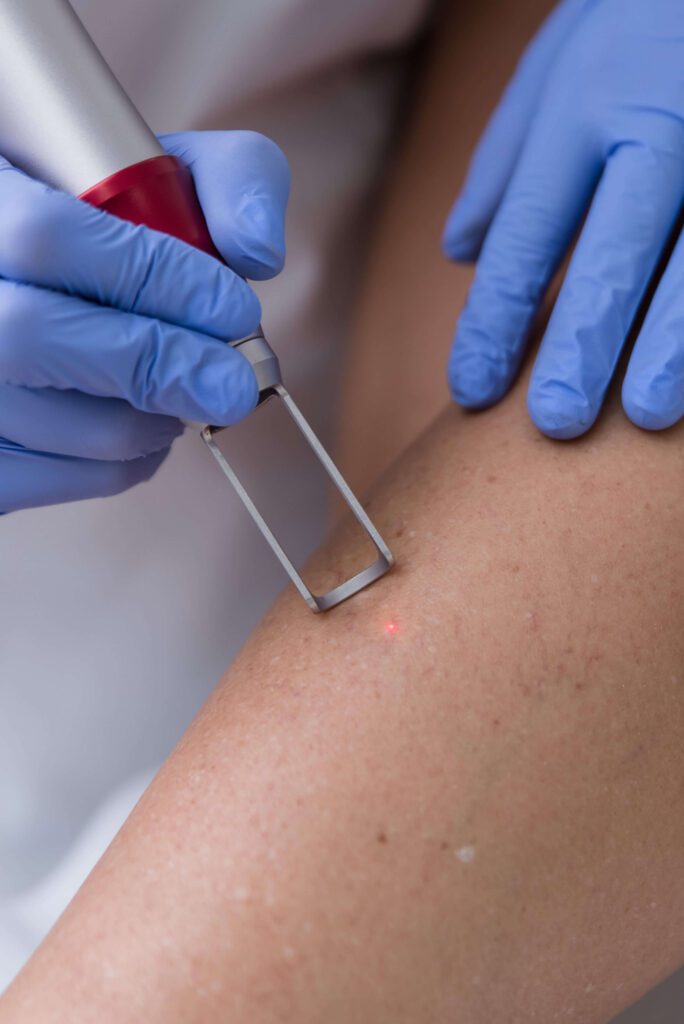Laser Removal of Leg Capillaries and Veins
Capillaries and veins on the legs appear in a large number of women and represent both an aesthetic and, at times, a health issue. Their appearance is most often painless, but they can also cause symptoms like a feeling of heaviness in the legs, itching, cramps, and leg swelling. They arise due to increased pressure in the superficial venous system or damage to the valves in the superficial veins. Genetics, estrogen, aging, and exposure to heat play the most significant roles in their development.

Treatment
The diode laser and Nd Yag laser for capillary removal work on the principle of selective photothermolysis. In this way, energy of a certain wavelength is absorbed in the capillaries, causing their thermal heating, coagulation, and destruction. Since the laser targets the hemoglobin pigment found only in blood vessels, there’s no fear of damaging the surrounding tissue. During treatment, a slight warming and stinging sensation is felt. After treatment, an immediate paleness can be noticed, followed by redness and mild swelling above the capillaries. Within a few days to several weeks, certain capillaries are eliminated and disappear. Laser treatment is not performed during the summer months due to the risk of hyperpigmentation and hypopigmentation. With lasers, we can remove the following:
- Teleangiectasias (spidery red to red-purple capillaries with a diameter of 0.5 to 1 mm)
- Phlebectasias/venules (thicker greenish capillaries with a diameter of 1 to 2 mm)
- Reticular veins (bluish veins in sizes of 2 to 3 mm)
Candidates
If you are troubled by capillaries on your legs and want to permanently get rid of them, you are a candidate for laser removal. Candidates do not include pregnant women, epileptics, people taking photosensitive drugs (e.g., isotretinoin, doxycycline), and those who have infections and inflammations in the region they wish to treat.
Results
Smaller teleangiectasias are completely removed after just one treatment, while more extensive capillaries require 3 to 4 treatments.
Recovery
A few days after the treatment, the treated area may be red, sensitive, and slightly swollen. After the redness subsides, small scabs appear on the capillaries. It’s undesirable to mechanically remove them, wax, or undergo vacuum treatments until they fall off. These scabs can last up to a month after treatment. All occurrences are temporary and transient. Very rare side effects are hypopigmentation, hyperpigmentation, and scars, but if post-treatment recommendations are followed, the possibility of these changes occurring is minimized. For the first two to three days, ice can be applied to the treated region to reduce swelling and redness. It’s recommended to apply creams with a high protection factor for a month after treatment. It’s advisable to avoid strong sun exposure for a month after the treatment.